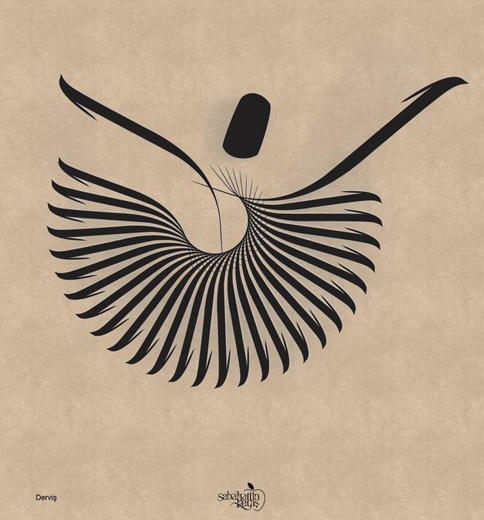Spring is Around the Corner

Guest Post by Ahmad Sawiz, ARCH Kabul Liaison
Amid the deteriorating security situation and the devastating conflicts in Afghanistan, Alliance for the Restoration of Cultural Heritage (ARCH) – the organization I represent here in Kabul – completed a public mural project one year ago today. In my eyes, this project, which I helped implement, has two significant impacts: It reconnects citizens with Maulana Jalaludin Mohammad Balkhi’s (Rumi) poetry, anchoring his presence firmly in the open public space. And it puts a spotlight on the importance of Afghan culture in the past and present.
ARCH started this initiative as part of its inspiring Rumi Gardens project. The idea behind Rumi Gardens is to establish gardens in different parts of the world, with each one expressing the beauty of Rumi’s poetry and his philosophy. One plan that I have been involved in is to build a Rumi garden on Kabul University’s Campus. I imagine a garden that includes my country’s trademark stones such as Lapis Lazuli, and traditional paintings, with Rumi’s poetry all around the garden – creating a peaceful and educational environment.
To spread this idea, and Rumi’s messages, we partnered with a group of social activists in Kabul called “Art Lords”. The group was founded by artist Kabir Mokamel; a graduate of Australian National University who returned home hoping to revive Afghanistan’s pre-conflict values. His idea was to use the ugly cement blast walls that are set up all over the city as protection against explosions, as his canvas. This contributes to beautifying the city, spreading hope for a better tomorrow. ARCH liked this concept and came up with the idea to showcase Rumi’s poetry.
Maulana Jalaludin Mohammad Balkhi, the great poet of the thirteenth century, was born in 1273 in Balkh, a northern province of Afghanistan. His father, Bahauddin, a great scholar and Sufi of his time, fled Balkh at the time of the Mongol invasions and ultimately the family went to Konya, Turkey. After the death of his father, Rumi continued his education with Burhanuddin, a Tirmiz scholar. Later during his time in Konya, he met Shams-e-Tabrizi, a great friend and influencer. Rumi’s connection to Shams led him to a big life change; he found a spiritual teacher in him. For this reason, he named one of his works Diwan Shams Tabrizi, a collection of lyrical poems with more than 40,000 verses.
Our first mural was painted on the blast walls in front of the Ministry of Labor, Social Affairs, Martyrs and Disabled (MoLSAMD) and the second one on the blast walls in front of the Ministry of Borders and Tribal Affairs (MoBTA). The murals painted are an illustrations of welcoming spring and flowers, of a path leading forward, reminding one of the light at the end of a tunnel that keeps you going, except that in our design it looks more like an inviting blue sky. The abilities of the poet and of the artists harmonically come together.
The poem on the murals is one of Diwan Shams Tabrizi’s famous verses:
هجر سرد چون زمستان راهها را بسته بود
در زمین محبوس بود اشکوفههای بوستان
چونک راه ایمن شد از داد بهاران آمدند
سبزه را تیغ برهنه غنچه را در کف سنان
“ We plant our seeds and wait
Winter blocks the road
Flowers are being held prisoner underground
But then green justice sends up a first spear ”
I visited both sites, and spoke to passersby. The artwork was appealing and meaningful to the local citizens, especially to those who were confused about Rumi’s identity. They are ordinary citizens who are puzzled about which country Rumi belongs to, nonetheless they were quick to voluntarily help out with the work connected to the painting process in unison with the Art Lords team.
At a time when the country is in turmoil, when hopes of lasting peace have nearly vanished, the emergence of such initiatives, especially Rumi Gardens, gives citizens hope that there will be stability in the future. There are obstacles and challenges, but through painting of such verses it seems as if there is still beauty in the world, so it’s easier to cope with the present. Thanks to the supporters of Rumi Gardens and Art Lords for caring to bring Rumi to life through an amazing piece of art painted on blast walls. You can see photographs here. They deliver a message of peace and make people forget for a few minutes at least, about the reasons for the presence of blast walls in the city.
Below is a Rumi-related drawing that I particularly like and wanted to share with you. It was created by artist Sabahattin Kayis.
ARCH headquarters, on October 7, 2017, organized an evening to honor and celebrate Rumi at the embassy of the Republic of Afghanistan. Find out more here.
